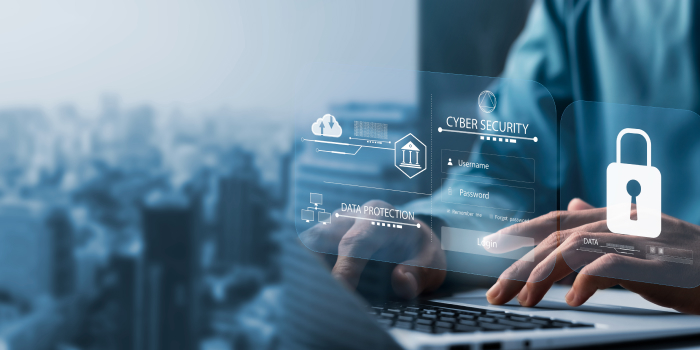Exploring The Role Of Blockchain In IoT Security
- October 13, 2023
Blockchain technology, initially conceived as a trustworthy digital ledger for Bitcoin transactions, is progressively gaining acknowledgment for its capacity to heighten security within the realm of the Internet of Things (IoT). With the IoT’s continuous growth, where countless devices globally are interconnected, sharing information, concerns regarding security and privacy have taken center stage. Blockchain technology in IoT Security and privacy, distinguished by its decentralized and tamper-resistant characteristics, can play a pivotal role in enhancing data protection and privacy. This is precisely where blockchain for security in IoT, with its decentralized and tamper-resistant characteristics, can assume a pivotal role.
What is the Internet of Things (IoT)
Table of Contents
The Internet of Things, an extensive web of devices ranging from smartphones and computers to smart home gadgets and industrial equipment, is intricately linked to the Internet, sharing data. This interconnectedness provides a multitude of advantages, such as heightened efficiency and convenience. Nevertheless, it also introduces substantial security issues. The vast amount of data in circulation and the multitude of devices engaged render the IoT highly susceptible to cyberattacks. Furthermore, conventional centralized security mechanisms have demonstrated susceptibility, as a solitary breach can jeopardize the entire network.
What is Blockchain Technology
The blockchain technology is one of the effective and innovational catalysts converting the idea of data security and transparency. In essence, blockchain is a virtual spreadsheet that records and verifies every transaction made through a decentralized process that involves multiple devices. The record of all transactions here is safe and unalterable, making this place ideal in many sectors and uses.
Blockchain is also important in protecting supply chains, ensuring money transactions, and protecting our identity as individuals. As a distributed system with no single entity in charge, blockchain is highly resistant to hacking due to the absence of a single point of authority.
That notwithstanding, blockchain technology is not only about security but also has the potential to enhance efficiency and transparency in many sectors of the economy. Real-time access to data through blockchain puts businesses in a better position to make informed decisions with positive financial impact.
The application of Blockchain in IoT security and Privacy
Blockchain technology for security issues and challenges in IoT plays a pivotal role in managing data collected from sensors while preventing duplicate information. Furthermore, sensors can leverage Blockchain technology for sending information, eliminating the need for a trustworthy third party. To address technical drawbacks and bottlenecks, device self-sufficiency, data integrity, virtual identity, and peer-to-peer communication are all essential.
Coordination between devices
With regard to IoT, blockchain is unique in addressing scaling problems, reliability concerns, and privacy issues. It allows the integration of devices and tracking of millions of connected devices in addition to transaction processing.
This involves decentralization whereby cryptographic algorithms are applied, thereby enhancing the level of privacy for the consumer data. This is an approach that eliminates faults and leads to a robust environment.
With the Blockchain being based on the most efficient platform for solutions on IoT (a solution that connects the devices in an integrated way without interruptions and problems), the connectivity it offers is outstanding. This model is both safe and decentralized, making “IoT blockchain” an exceptional choice.
A trend towards protection
Companies have settled for more transparency, convenience, and security; hence using Identity Management to control access management.
Blockchain identity is one of such trends due to its ability to store information in chains of transactions that cannot be changed during verification. It stores the data in a manner that avoids the phenomenon of server leaks.
Furthermore, authentication systems ensure the validation of data while at the same time protecting corporate information for employees as a right by virtue of the GDPR (consensus-approved regulation).
Processing transactions
The participants in the system give rise to the transactions that we talk about.
The use of blockchain makes the processes of safety, auditable, transparent, efficacy, and interruption-resistant during the execution of this or these types of interaction or digital interaction.
The operations of each block get the time stamp and confirm that they don’t have any manipulation by being rightly ordered. For every transaction one wants to add to the chain, everyone on the network validates it using an algorithm; approved transactions end up being collected into a block that is distributed to every node on the network.
A single fingerprint of the previous block validates the new block and subsequent blocks.
It involves billions of transactions per device; thus, installing a standardized, point-to-point communication model would decrease the installation and maintenance costs in large big data centers and also storage and devices that comprise the IoT networks, thus avoiding errors in node dragged down by a collapse
Therefore, peer to peer communications should be implemented and validated through some consensus for purposes of preserving the privacy and safety of large IoT networks.
Data Tracking
The devices used in IoT end are secure in transactions as based on all devices, which ledgers can communicate with embedded in Blockchain.
The information provided by the customer can be traced to ensure the experience is seamless, private, and untouchable while making sure that all the participants in the chain have faith in the data.
Technology is used in all heavy work, by means of machines, so that none of the processes need to be completed by a person.
They are allies in addressing the scalability and trust difficulties. These codes will remain private at all times, and no one will be able to write over the codes, providing such security that the Internet of Things has dreamt of.
Conclusion
The rise of the Internet of Things comes with an accompanying surge in security concerns. The use of blockchain technology, devoid of any single authority and incorruptible, is an appealing solution to these challenges. Blockchain can pave the way for a more secure and reliable internet. Plus, incorporating services will further fortify this digital landscape.
FAQs
Blockchain improves IoT security by offering a tamper-free and distributed database of information integrity, safe, impartial transactions, and reduction of vulnerabilities due to single servers.
Data in IoT devices is secured by blockchain through different decentralized ledgers, cryptographic verification, and consensus mechanisms thereby ensuring data integrity and reducing the possibility of vulnerabilities.
How does blockchain support data privacy?
By ensuring the security of blockchain by encrypting the data, using a distributed database, and making the data immutable, it becomes extremely difficult to interfere with the data.
The combinations of IoT and blockchain technologies formulate strong solutions in diverse sectors, including various blockchain IoT use cases. Some of these involve secure and transparent supply-chain tracking and verification of origin and movement of goods. Furthermore, they facilitate safe and open transfers of goods and services that do away with the middlemen and promote efficiency in the process. In addition, they improve identity management, as they provide a reliable and unalterable method for asserting and approving personal or device identities, preserving the sanctity of data and relationships.
Implementing Blockchain on IoT Devices:
- Choose an appropriate blockchain platform.
- Include IoT devices in the blockchain.
- Build smart contracts for Internet of Things (IoT) functions.
- Promote secure communication and encrypted data.
- Implement consensus mechanisms for trust.
- Ensure that the system is routinely updated and maintained in order to be effective and appropriate in line with the changing technologies.





